Yarrow
$4.49
Achillea Millefolium
- Seed Count 5000
- Many Uses
- Perennial
- Height 1.2 m
In stock
Description
Bring a touch of natural beauty to your garden with Yarrow, with its soft, feathery foliage that resembles fern fronds, Yarrow forms dense mats that create a lush foundation for its impressive flower heads.
its handsome, aromatic leaves are especially fragrant in the early morning, adding a sensory delight to your morning gardening.
Yarrow blooms also last a long time, making them an excellent choice for cut and dried flower arrangements.
Plus, this drought-tolerant perennial is low maintenance, flourishing in poor soil and well-drained areas, helping to prevent soil erosion and cover those tricky spots in your garden.
And it doesn’t just look good; Yarrow is known for its medicinal properties and uses in an organic garden.
Toss some in your compost bin to help activate and breakdown organic material or use it to improve soil health. It can accumulate nutrients, particularly nitrogen, and its deep roots help break up compacted soil, enhancing aeration and drainage.
| Method: Raise seedlings | Soil Temp: 21°C - 24°C |
| When: Cool Mountain Sep - Dec | Position: Full sun |
| When: Temperate Aug-Nov, Mar-Jun | Soil: Rich, good drainage |
| When: Sub Tropical Aug-Nov, Mar-Jun | Planting Depth: 3mm |
| When: Arid Jun-Jul, Apr-May | Row Spacing: 30cm apart |
| When: Tropical Apr - Jul | Plant Height: 1.2 m |
Climate and Soil Requirements
Climate:
- Yarrow thrives in a wide range of climates, from cool temperate to warm subtropical regions.
- It is highly drought tolerant and can withstand hot, dry conditions, making it ideal for Australia’s arid and semiarid regions.
- In cooler climates, yarrow can tolerate frost but may die back in winter and regrow in spring.
Soil:
- Type: Yarrow prefers well-draining soil and can grow in poor, sandy, or rocky soils.
- It is not suited to heavy clay soils that retain water.
- pH: Tolerates a pH range of 4.7 to 8.0 but prefers slightly alkaline conditions (pH 6.0–7.5).
- Preparation: Improve soil drainage by adding sand or gravel if necessary.
- Incorporate organic matter like compost to enhance soil structure, but avoid over fertilising, as yarrow thrives in low fertility soils.
Propagation
- Sow seeds directly into the garden or in seed trays.
- Lightly cover with soil, as yarrow seeds require light to germinate.
- Keep the soil moist until germination, which takes 14–21 days.
- Thin seedlings to 30 cm apart once they are established.
Sunlight and Watering
Sunlight:
- Yarrow prefers full sun (at least 6 hours of direct sunlight per day) but can tolerate partial shade.
- In hotter regions, afternoon shade can help prevent scorching.
Watering:
- Establishment Phase: Water regularly to help young plants establish roots.
- Mature Plants: Once established, yarrow is highly drought tolerant and requires minimal watering. Overwatering can lead to root rot.
- Signs of Overwatering: Yellowing leaves and wilting despite moist soil.
Maintenance
Pruning:
- Deadheading: Remove spent flowers to encourage continuous blooming
Cutting Back:
- Cut back plants to about 10–15 cm in late autumn or early spring to promote healthy growth and prevent legginess.
Fertiliser:
- Yarrow does not require much fertiliser and thrives in low fertility soils.
- If necessary, apply a light application of balanced organic fertiliser in spring.
Pests and Diseases
Yarrow is relatively pest resistant but can occasionally be affected by:
Aphids:
- Spray with a strong jet of water or use insecticidal soap.
Powdery Mildew:
- Improve airflow and avoid overhead watering.
- Treat with a fungicide if necessary.
Spider Mites:
- Increase humidity and use neem oil as a natural remedy.
Harvesting
Leaves and Flowers:
- Harvest in the morning when essential oils are most concentrated.
- Hang bunches upside down in a cool, dark, well-ventilated area.
- Store dried yarrow in an airtight container.
Companion Planting with Yarrow
Yarrow is an excellent companion plant due to its ability to attract beneficial insects, improve soil health, and deter pests.
Benefits of Yarrow in Companion Planting:
- Attracts Beneficial Insects: Yarrow’s flowers attract pollinators like bees and butterflies, as well as predatory insects like ladybugs and hoverflies that control pests.
- Improves Soil Health: Yarrow’s deep roots help break up compacted soil and bring nutrients to the surface.
- Deters Pests: Yarrow’s strong scent can repel certain pests.
Best Companion Plants
Vegetables:
- Tomatoes: Yarrow attracts predatory wasps that control tomato pests like aphids and caterpillars.
- Cucumbers: Improves growth and repels aphids.
- Brassicas (e.g., broccoli, cabbage): Deters cabbage moths and improves soil health.
Herbs:
- Lavender: Both are drought tolerant and attract pollinators.
- Rosemary: Complements yarrow’s pest repellent properties.
- Thyme: Enhances soil health and deters pests.
Flowers:
- Echinacea: Attracts pollinators and complements yarrow’s medicinal properties.
- Marigolds: Deters nematodes and adds colour to the garden.
- Sunflowers: Provides shade and attracts beneficial insects.
Fruit Trees:
- Yarrow planted around fruit trees can improve soil health and attract pollinators.
Plants to Avoid:
- Mint: Can become invasive and compete with yarrow.
- Basil: Prefers richer soil and more water than yarrow.
Managing Yarrow’s Spread
Yarrow can spread aggressively through its rhizomes and self-seeding.
To control its growth:
- Plant yarrow in a contained area or use barriers like edging.
- Regularly remove spent flowers to prevent self-seeding.
- Divide plants every 2–3 years to manage their spread and rejuvenate growth.
Troubleshooting Common Issues
Yellowing Leaves:
- Cause: Overwatering or poor drainage.
- Solution: Reduce watering and improve soil drainage.
Leggy Growth:
- Cause: Insufficient sunlight or overcrowding.
- Solution: Prune back plants and ensure they receive at least 6 hours of sunlight daily.
Poor Flowering:
- Cause: Excessive fertiliser or shade.
- Solution: Avoid over fertilising and ensure plants are in full sun.

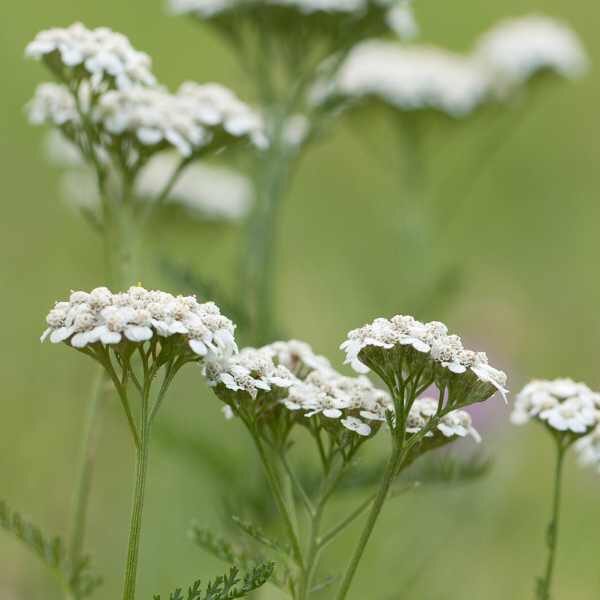





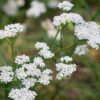

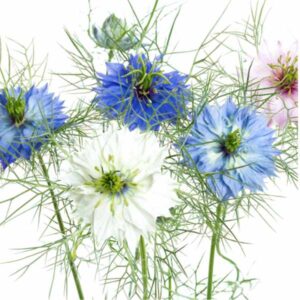
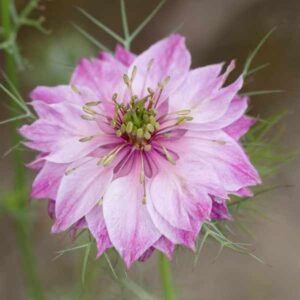

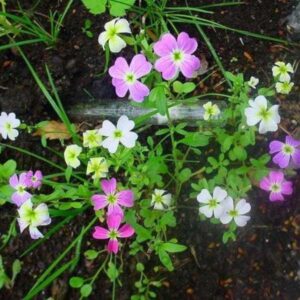
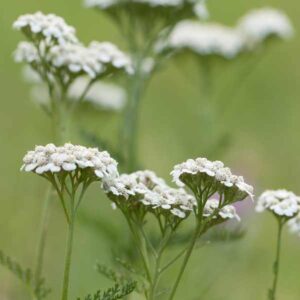
2 reviews for Yarrow